[aesop_content color=”#1d54c4″ background=”#e6e6e6″ columns=”1″ position=”none” imgrepeat=”no-repeat” floaterposition=”left” floaterdirection=”up”]
[row]
[column md=”6″]
Quick Look
- Exhibition of luminous, inventive era of Lexington Camera Club
- Reveals a daring, supportive, experimental group of photographers
- Works by Meatyard, May, Mendes, Baker Hall, Merton, and other lesser known members
- Curated thematically by Brian Sholis
- At Cincinnati Art Museum thru December
[/column]
[column md=”6″]
[SlideDeck2 id=9225]
[/column]
[/row]
[/aesop_content]
During its heyday, the Lexington Camera Club was one of the more experimental groups of photographers outside of art hubs like New York or Chicago. What’s more, the club’s members—comprised of opticians, lawyers, and writers—differentiated themselves from their counterparts in bigger cities by allowing the idiosyncrasies of their environment to inspire their photographic explorations.
Club mentors Van Deren Coke and Ralph Eugene Meatyard encouraged their peers to employ multiple exposures, out-of-focus techniques, and compositions that deliberately made use of the play between light and shadows when making photographs. The resulting images often incorporate aspects of life in Kentucky: family, nature, and daily life are recurring themes within the club’s work.
The distinctions of the Lexington Camera Club are the subjects of Kentucky Renaissance: The Lexington Camera Club and Its Community, 1954-1974 currently on view at the Cincinnati Art Museum. The exhibition is a testament to the club’s profound dedication to expanding the definition of photographic output, often through publications and partnerships as well as the photographs themselves. In the exhibition, works by Meatyard and Coke are presented alongside images made by Zygmunt S. Gierlach, James Baker Hall, Robert C. May, Guy Mendes, Thomas Merton, Cranston Ritchie, and Charles Traub.
Rarely in the museum’s gallery are any one photographer’s works presented alone. Indeed, Curator of Photography Brian Sholis carefully constructed pairs and groups of photographs by multiple club members to help inform visitors the extent to which the club’s activities were collaborative. It is Sholis’ curatorial decision-making that effectively illustrates the interrelationships between club members, their geographical surroundings, and modernist photographic trends.
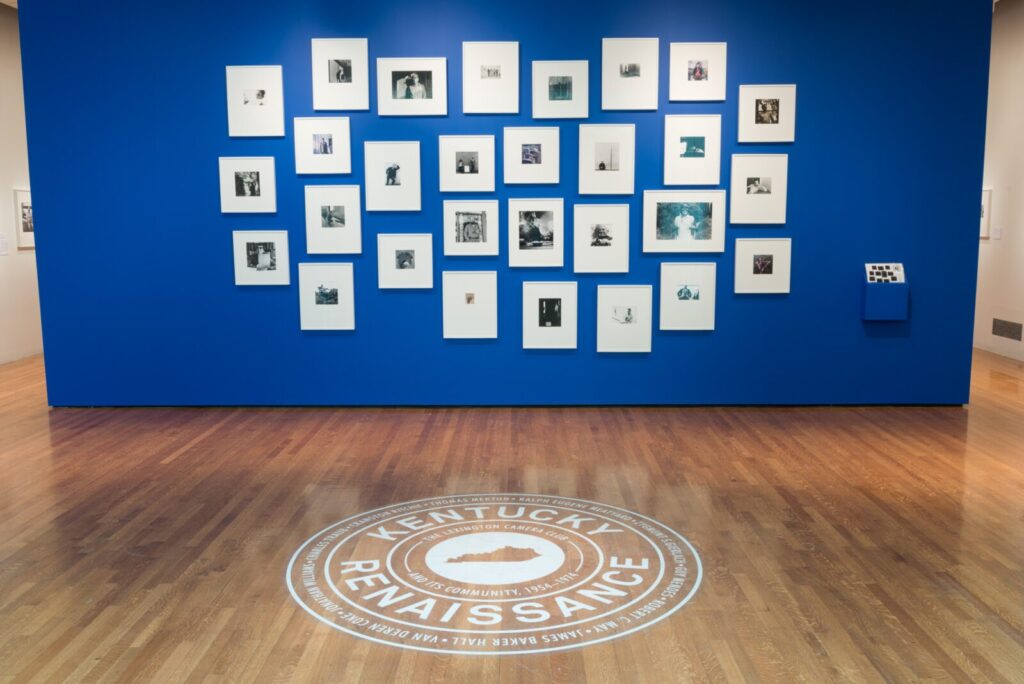
Kentucky Renaissance contains three primary themes: People, Place, and Experimentation. The Lexington Camera Club had many well-known figures among its members, yet individual achievement is hardly ever the focus of this comprehensive exhibition. Sholis emphasizes the club’s collectivism by erecting a wall at the gallery’s entrance featuring a salon-style presentation of photographs by all included artists, albeit without accompanying image labels. Here, visual connections are forged between similar uses of composition, content, and style.
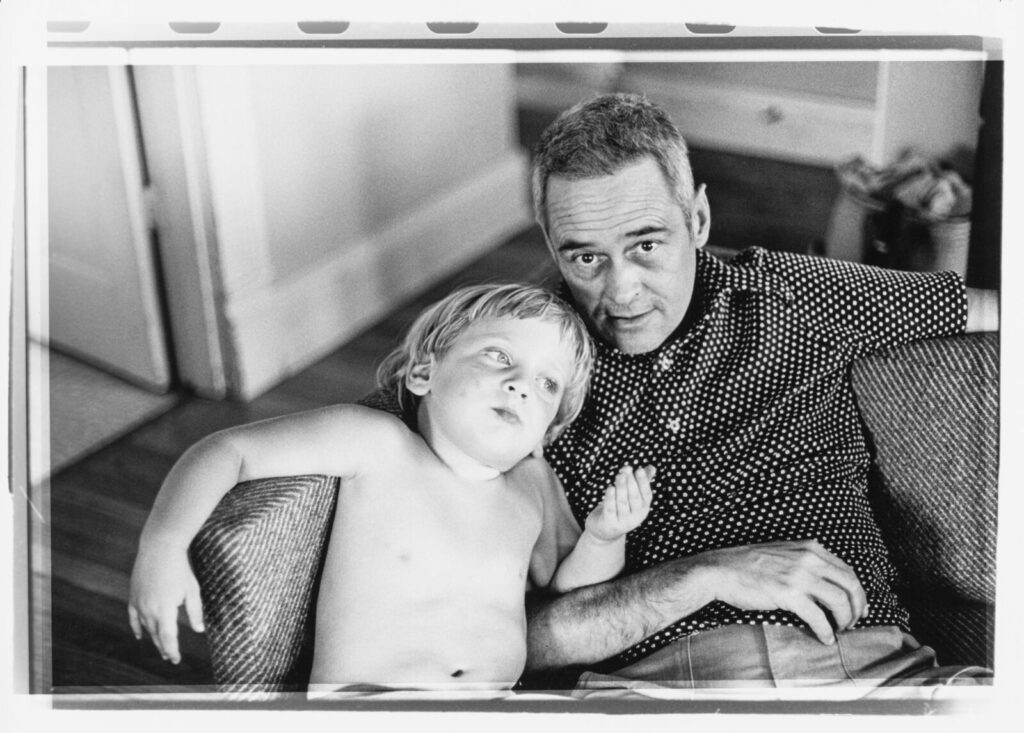
Walking behind the introductory wall will deposit visitors into the first of the gallery’s three thematic enclaves, which fixates on People. Sholis makes clear the affinity each club member reserved for their colleagues: some photographs—such as Hall’s Gene and Michael (c. 1972), which offers an intimate moment between Meatyard and Hall’s son—allude to familial relationships shared between club members.
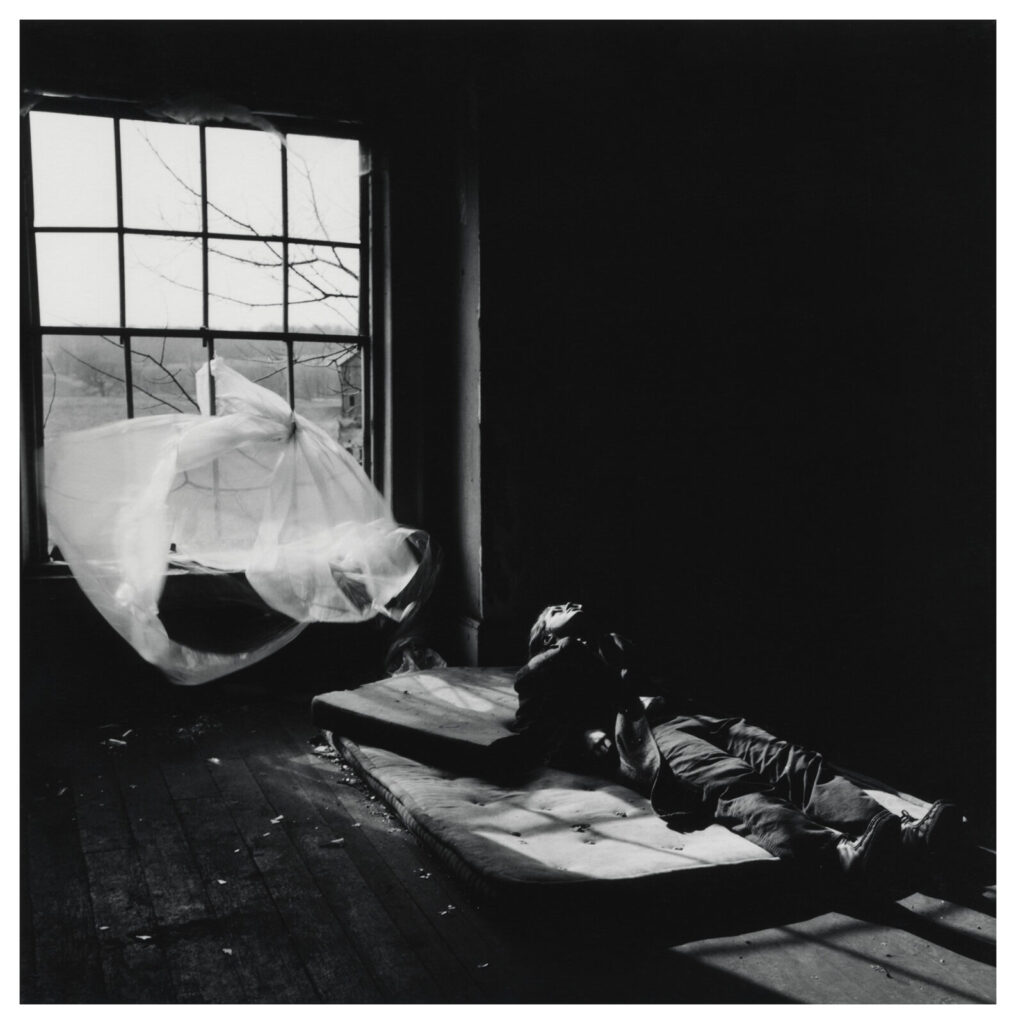
Chris Meatyard (1973) by May serves as an instance wherein other club members’ families assisted in making photographic experiments exploring how light propels itself across different surfaces. The proximity of many of these various portraits within the gallery suggests that nearly all stemmed from the similar creative inputs—indeed, they did. Sholis’ ability to mold the club’s complex profile out of interconnected parts prompts a realization one may only be able to experience upon visiting the exhibition and seeing these objects in person: that this group of Midwestern photographers was indeed working as a unit.
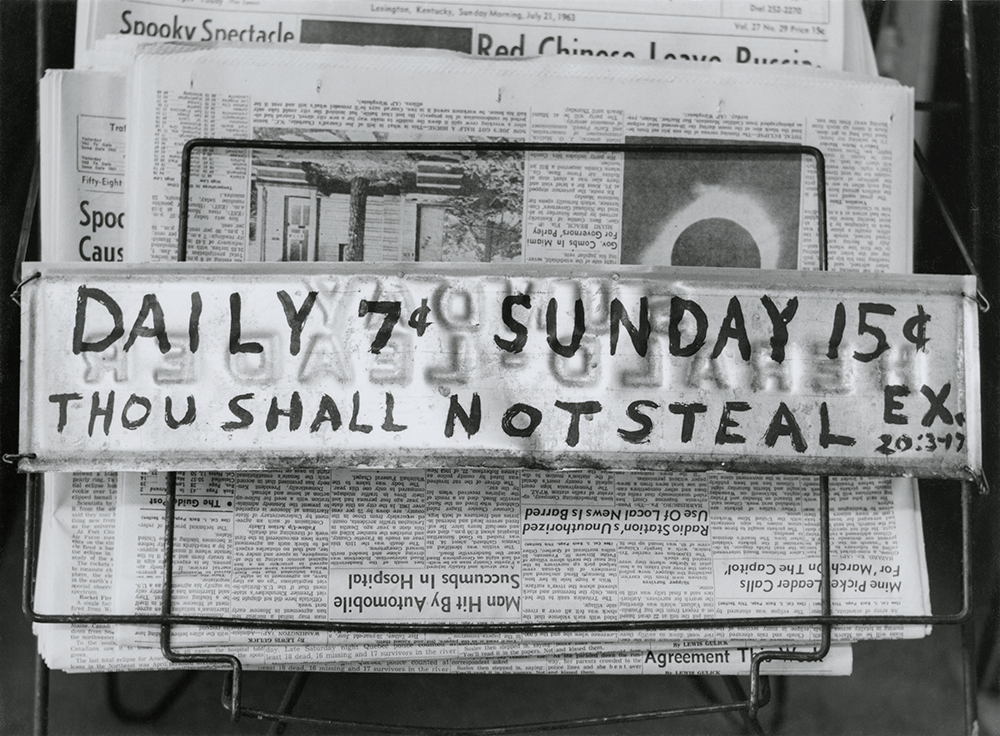
The theme of Place occupies the middle section of the gallery and it is here where Sholis’ selections accentuate certain regional characteristics. Specifically, the photographs that embody the club’s dedication to depicting nearby places exceed typical representations of home. Coke’s Thou Shall Not Steal (1963) presents a newspaper rack stocked with copies of the July 21, 1963, edition of The Lexington Herald-Leader. The rack’s nameplate is flipped so that the stamped relief of the newspaper’s name appears backward in the photograph. The backside of the nameplate faces the viewer and contains handwritten prices for the Herald-Leader while offering the photograph’s eponymous warning to potential thieves; the warning even cites its source—Exodus 20: 3-17. Some editions of the paper appear upside-down, forcing one to concentrate on the photograph’s content if they wish to gain a sense of the printed headlines and stories.
The varied texts in Coke’s image marry political, religious, and colloquial musings in an attempt to capture local interests in 1963. While the biblical excerpt stands out amongst smaller text, it yields to the overabundance of legible words and phrases. Thou Shall Not Steal exemplifies the attention Club members paid to the environment, noting how some ideologies can shape local culture.
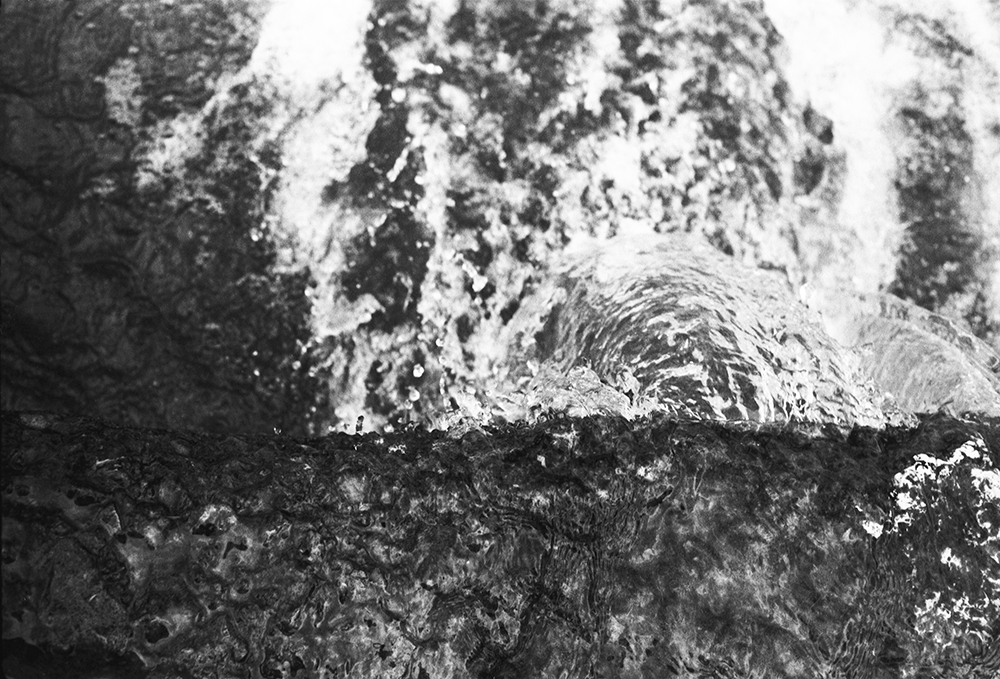
Under the guise of Place, Kentucky Renaissance also includes photographs that could be appropriately categorized as landscapes, but even these examples break from stereotypes of the landscape genre. Thomas Merton’s Untitled (c. the 1960s) displays a close-up view of water ripples near the point where water and rock meet. While it is unclear where Merton was when making this photograph, the rocky features mirror elements from works such as Cranston Ritchie’s Untitled (Hands on Rock) (1956-61) or Meatyard’s photographs of Eastern Kentucky’s Red River Gorge that were published alongside Wendell Berry’s prose in The Unforeseen Wilderness (1971).
Merton’s image serves as a visual intersection of photographic experimentation and spirituality. Some club members found inspiration in facets of Zen teachings after Coke and Meatyard learned about Zen from Minor White during a 1956 workshop at Indiana University, Bloomington. Merton’s photograph is exemplary of the distribution of White’s expertise. It should be noted, however, that Merton—who was ordained in 1949 and lived in the Abbey of Gethsemani in Bardstown—was already a person of faith when this photograph was made. He likely used White’s insight as guidance for incorporating his mantras into his preferred photographic techniques. In any case, Untitled captures in detail subtle features of Kentucky terrain in a manner akin to one of the twentieth century’s most prominent photographers. Merton’s photograph may allude to isolation, but the Lexington Camera Club was not a group unfamiliar with the broader photographic community.
Familiarity with White and mainstream photography (Coke had in his personal collection photographs made by White, Alfred Stieglitz, Walker Evans, and other well-known artists) did not stop members of the Lexington Camera Club from pushing the limits of the photographic process in innovative ways. Experimentation becomes the focus in the gallery’s third area, the one furthest from the exhibition’s entrance.

Here, People and Place serve as subjects from which to explore the steps one takes when making a photograph. James Baker Hall used a film camera when making Chairs (c. 1973), in which he re-wound the film to expose the same negative multiple times. Different viewpoints of the same group of wooden chairs are layered on top of each other, some more in focus and opaque than others. A ghostly aura characterizes the photograph’s content, but it is Hall’s process that is the actual subject of the work.
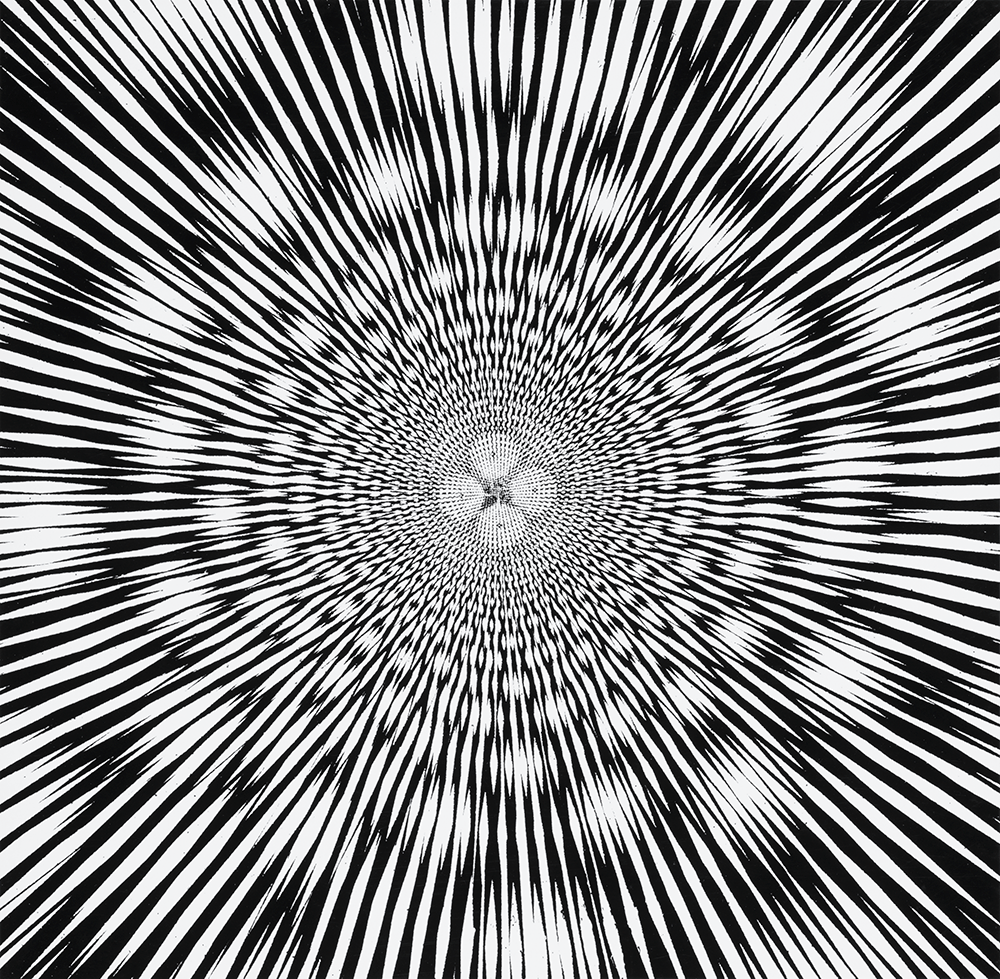
Experimentation culminates in images such as Gierlach’s Abstract (c. 1966), which is reminiscent of Man Ray’s radiographs. To achieve the aesthetic in both Abstract and Ray’s radiographs both artists laid objects on top of light-sensitive paper before exposing the paper to light. Gierlach, a radiologist by trade, created multiple works like Abstract that also appear in the exhibition. Sholis likely felt obligated to include images like Abstract in the exhibition, yet his placement of them within the gallery was undoubtedly a deliberate choice: Gierlach’s experimentations are on the gallery’s back wall—Abstract and its equivalents are the last works to be seen.
Visitors are then compelled to exit the gallery via the way they entered; Abstract then becomes only the midpoint of one’s journey through the gallery. Enhanced by the dispersion of publications featuring prints made by club members throughout the room, one’s revisiting of the exhibition’s themes continues to build the intended narrative around Coke, Meatyard, Gierlach, and their peers. That is, the Lexington Camera Club stands as one of history’s most self-supportive, exploratory groups of art practitioners.
Kentucky Renaissance: The Lexington Camera Club and Its Community, 1954-1974 runs until January 1st, 2017 at the Cincinnati Art Museum. A full-length catalog by Brian Sholis, accompanied by John Jeremiah Sullivan, is available for purchase through Yale University Press.
SEE ALSO: Part I and II on Guy Mendes: Its What You See and Unframed Play.
TOPMOST IMAGE: Cranston Ritchie, Untitled [Hands on Rock], ca. 1956–61, gelatin silver print, 7 x 9 in. (17.8 x 22.9 cm), Cranston Ritchie Collection, Photographic Archives, University of Louisville
ABOUT THE AUTHOR: Hunter Kissel is currently pursuing a Master of Arts in Critical and Curatorial Studies as well as a Master of Public Administration at the University of Louisville. He has held fellowships at the Speed Art Museum and the Kentucky Museum of Art and Craft and has curated exhibitions at the Kentucky Museum of Art and Craft, the Hite Art Institute at the University of Louisville, and the Huff Gallery at Spalding University. His MA thesis will focus on the life and career of Ralph Eugene Meatyard.Â




